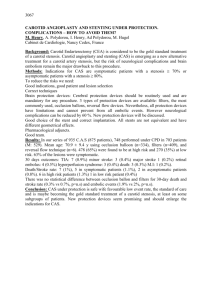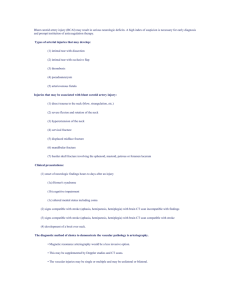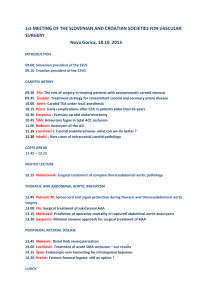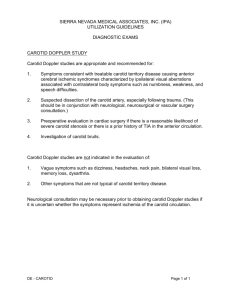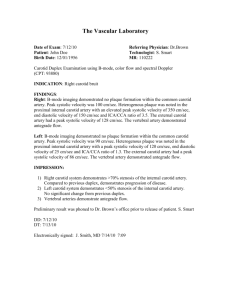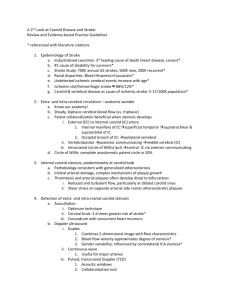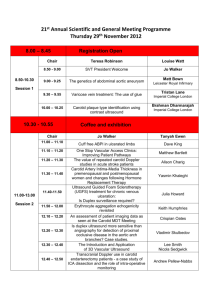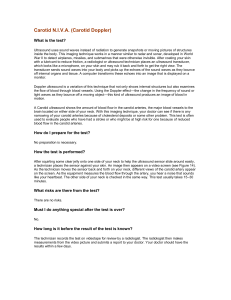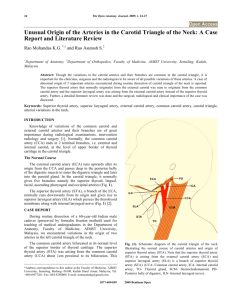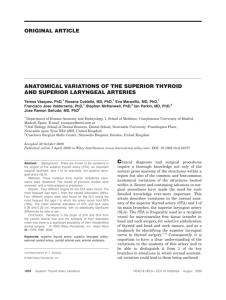VASCULAR SURGICAL SOCIETY of GREAT BRITAIN and IRELAND
advertisement
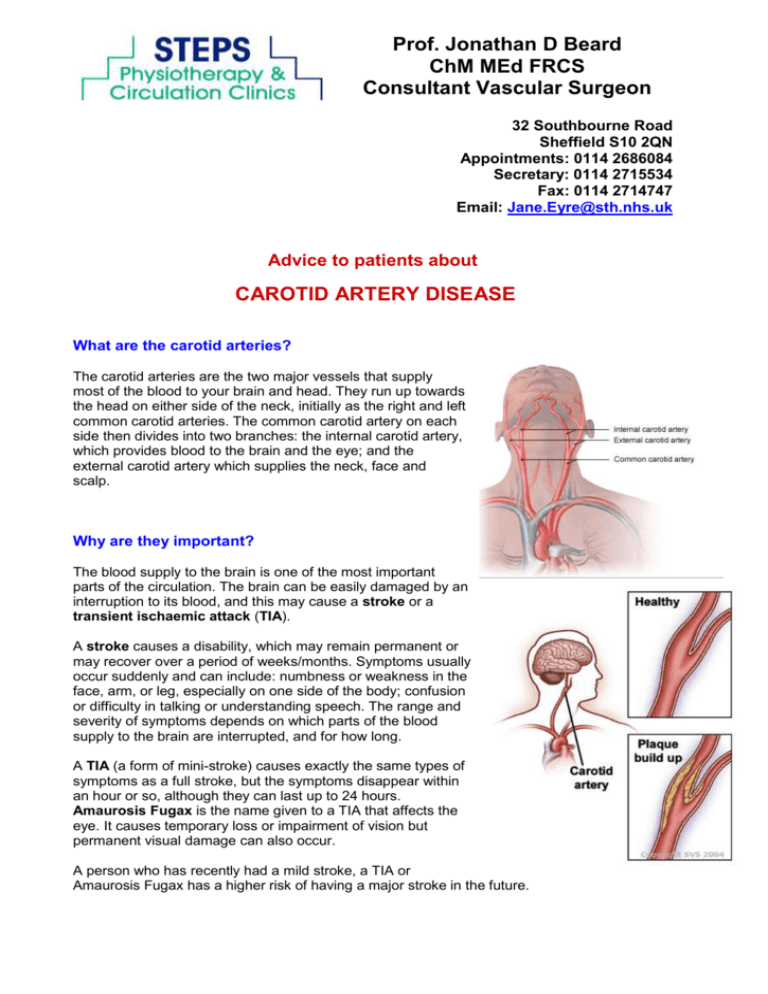
Prof. Jonathan D Beard ChM MEd FRCS Consultant Vascular Surgeon 32 Southbourne Road Sheffield S10 2QN Appointments: 0114 2686084 Secretary: 0114 2715534 Fax: 0114 2714747 Email: Jane.Eyre@sth.nhs.uk Advice to patients about CAROTID ARTERY DISEASE What are the carotid arteries? The carotid arteries are the two major vessels that supply most of the blood to your brain and head. They run up towards the head on either side of the neck, initially as the right and left common carotid arteries. The common carotid artery on each side then divides into two branches: the internal carotid artery, which provides blood to the brain and the eye; and the external carotid artery which supplies the neck, face and scalp. Why are they important? The blood supply to the brain is one of the most important parts of the circulation. The brain can be easily damaged by an interruption to its blood, and this may cause a stroke or a transient ischaemic attack (TIA). A stroke causes a disability, which may remain permanent or may recover over a period of weeks/months. Symptoms usually occur suddenly and can include: numbness or weakness in the face, arm, or leg, especially on one side of the body; confusion or difficulty in talking or understanding speech. The range and severity of symptoms depends on which parts of the blood supply to the brain are interrupted, and for how long. A TIA (a form of mini-stroke) causes exactly the same types of symptoms as a full stroke, but the symptoms disappear within an hour or so, although they can last up to 24 hours. Amaurosis Fugax is the name given to a TIA that affects the eye. It causes temporary loss or impairment of vision but permanent visual damage can also occur. A person who has recently had a mild stroke, a TIA or Amaurosis Fugax has a higher risk of having a major stroke in the future. What is carotid artery disease? The most common disease to affect the carotid arteries is atherosclerosis, commonly known as hardening of the arteries. In this condition local areas of plaque (made up of scar and fatty tissue) in the artery wall cause the carotid artery to narrow. The blood supply to the brain or the eye is usually interrupted by fragments of a plaque breaking off and travelling in the blood stream to block smaller branches further on. The more severe the narrowing caused by atherosclerosis, the higher the risk of a future major stroke. Detecting carotid artery disease Carotid artery disease may be detected incidentally by your doctor or may be detected by investigations following a recent stroke or TIA. Listening to the carotid arteries in the neck with a stethoscope can sometimes indicate the presence of a narrowing. Other tests are needed to fully investigate carotid artery disease. These include:Duplex Ultrasound – this technique uses a probe, which generates ultrasound waves, pressed gently against the neck, rather like the scans of babies during pregnancy. MRA (Magnetic Resonance Angiography) – this type of scan uses magnetic fields and pulses of radio energy, often combined with a special contrast agent or ‘dye’, to highlight the blood vessels. CT (Computed Tomography) Scan – this is a computerised x-ray test which is often used to scan the brain for damage following a stroke or TIA, but which is occasionally used to image the carotid arteries as well. Angiography – this is another x-ray test where a fine tube is placed into the artery in your groin, and is guided toward the carotid arteries. Through this tube contrast agent is injected to make the vessel visible. Local anaesthetic is given to numb the skin. Treatment of carotid artery disease Many cases of carotid artery disease do not require treatment. Some build-up of plaque in the carotid arteries is a normal part of ageing, and simply trying to lead a healthier lifestyle may be all that is required, often combined with drugs to make the blood less sticky (e.g. aspirin) and drugs to reduce cholesterol (statins) and blood pressure. Treatment of a severe narrowing is performed if you have a high chance of a future stroke, such as following a recent small stroke or TIA, or prior to heart bypass surgery. The narrowing can usually be treated by an open operation (carotid endarterectomy) or by a newer, technique (carotid artery stenting). Separate leaflets give more information on each of these treatments. What can I do? You can take a number of important measures to reduce your risk from carotid artery disease. These will also help delay/prevent atherosclerosis in other blood vessels in your body, such as those supplying your heart and other vital organs, and those to your legs: Don’t smoke and take regular exercise Eat foods low in saturated fat and cholesterol and lose weight if you are overweight Work with your doctor to lower high blood pressure and reduce the stress in your life If you have diabetes, see your doctor regularly and ensure good diabetic control Take aspirin and a statin as recommended or prescribed by your doctor

